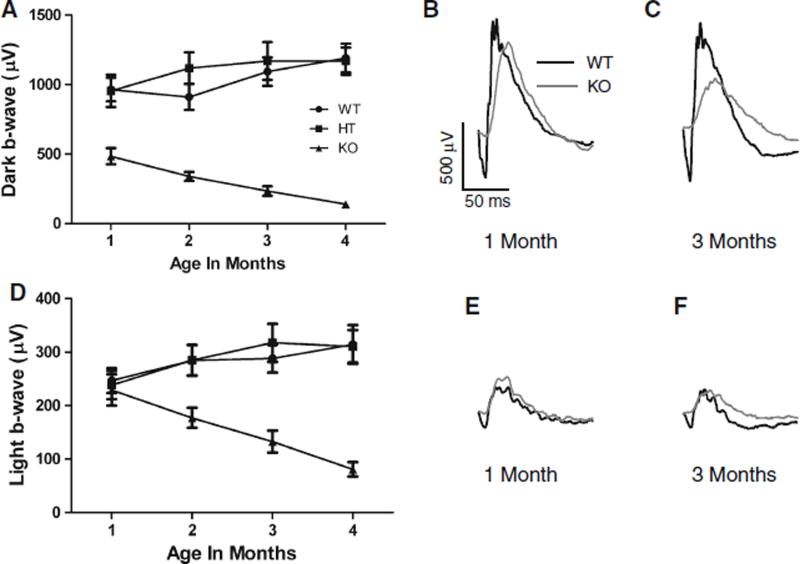Fig. 4.
Dark- and light-adapted b-wave amplitudes plotted as a function of age. a Dark-adapted b-wave amplitudes elicited by bright white flashes (5.63 × 104R*) recorded up to 4 months postnatal in knockout (KO; n = 11, filled triangles), wild-type (WT; n = 12, filled circles), and heterozygous (HT; n = 12, filled squares) mice [Error bars = mean ± SEM]. b, c Representative dark-adapted ERG traces at 1 and 3 months postnatal for WT (black trace) and KO (gray trace) mice. d Light-adapted b-wave amplitudes elicited by bright white flashes recorded up to 4 months postnatal. 505-nm background light was set at an intensity necessary to produce 7300 R*/s per rod. e, f Representative light-adapted ERG traces at 1 and 3 months postnatal for WT and KO mice

